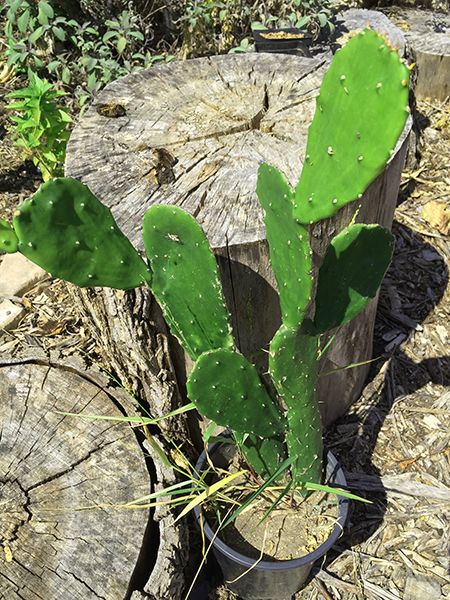You can count on finding fresh nopalitos in central Texas in the middle of summer. A staple food in México where it is prepared in kitchens all around the country, raw or cooked: boiled, stewed, fried or grilled. The flavor is slightly acid, tart with a slimy, chewy texture. Even when not at its best like in Spring, nopales don’t disappoint in summer. Is one of the most common ingredients in Mexican restaurants on plates like “carne asada with nopalitos”, eggs with nopalitos in breakfast tacos, and nopalitos salad.
August is also the time when these plants have mature fruit call prickly pear or “tuna” in Spanish. It is a sweet, fresh and juicy perfect snack for summer; the flavor is between grapes and pears with little hard seeds. You can find them whole or peel in supermarkets. Here is a video on how to peel tunas.
More than 150 varieties are native to México and the south of United States. The most popular varieties to eat are not cold-resistant and they will need little protection In Winter if you decide to grow them.
A delicious salad recipe is to cook the nopalitos in water with salt, let them cool and drain the water, add cilantro, onion, tomatoes, vinegar pickled jalapeños; dress with olive oil, balsamic vinegar and Italian oregano. Make puree with a big avocado, lightly spread on top of a corn tostada, top with the nopalitos and enjoy.
Other way to enjoy your nopalitos is in breakfast tacos. Start with cooked and drained nopalitos, fry them in olive oil until the stickiness goes away then add onion, jalapeños and tomatoes until they are nice and soft then add eggs. Warm your tortillas in a comal or heavy-bottomed skillet fold in half and fill with refried beans and “nopalitos with eggs”. ¡Buen provecho!

